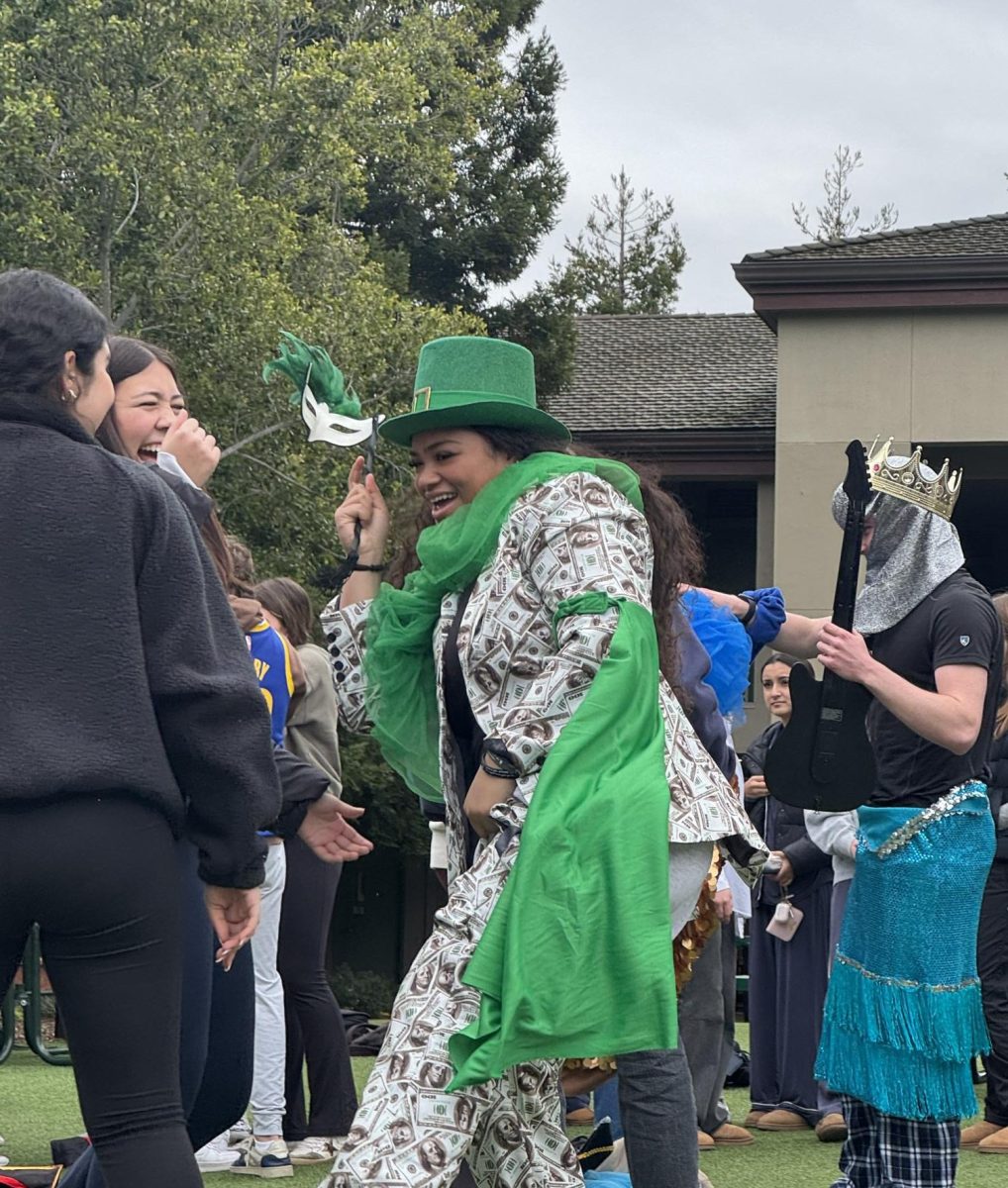A few weeks after then-juniors Cody Kletter and Melanie Goldberg were elected Menlo’s 2024-25 student body president and vice president in April, Head of School Than Healy approached them with an idea to help boost school spirit. He proposed creating an inter-grade house system where students would be divided between four houses, similar to the one implemented during his tenure at Lakeside School in Seattle.
Thus, with the help of classmates Ellie Knoll, the student life coordinator, and Kyle Mahaffey and Scarlett Bundy, the spirit ambassadors, Kletter and Goldberg got to work creating the new system. They began by naming the houses after important figures in Menlo’s history and assigning them colors, logos and character traits.
Although they originally planned to name a house after Healy, he requested they choose someone else. They eventually landed on Warren, Douglass, Halverson and Lapolla.
The Warren house is named after William Warren, the founder and first headmaster of the William Warren School, the all-boys school that became Menlo.
Leon Forrest Douglass, the Douglass house namesake, was a successful inventor who bought what is now known as Stent Hall in 1921; Menlo bought the mansion in 1945, and it was known as Douglass Hall until it was named after Menlo’s first board chair, Peter Stent.
Fred Halverson was a longtime dean and assistant headmaster at Menlo who passed away in 2003 and worked at Menlo for 49 years.
The Lapolla house is the only house not named posthumously — it is named after Cindy and Tony Lapolla, a couple who retired from Menlo in 2021. Cindy Lapolla was an associate admissions director, while her husband Tony Lapolla served as dean of students.
The student council team worked with Assistant Upper School Director Adam Gelb, former Student Activities Coordinator Francis Ferrell and Dean of Student Life and Culture Alexis Bustamante to find times for house meetings and assemblies. They now have about seven student life blocks set aside for house events this year. They also worked with members of the Student Council Arts Committee to design logos and create posters.
Although most of what Kletter, Goldberg and the student council team imagined came to fruition, the administration rejected the proposal of arranging the houses individually. “For concerns of safety and [for] other logistical reasons, they decided that they wouldn’t go through with [the plan], at least for this year, if it wasn’t organized by advocacy,” Kletter said.
Throughout the seven or so more student life blocks reserved for house activities this year, houses will be judged in competitions on their level of spirit and the results of each competition will be recorded in a point system. “We want the point system to be displayed throughout the year, so that people are still engaged in a month where there aren’t a lot of house competitions,” Goldberg said. At the end of the year, the plan is for the winning house to get a trophy, similar to the House Cup from Harry Potter.
The four houses participated in the first-ever competition during an Upper School assembly on Sept. 6. “There were a few goals we had with the house system: […] promoting inter grade bonding [and] boosting school spirit on campus,” Kletter said.
Goldberg believes the first assembly was a success and effectively moved them closer to achieving those goals. “I’ve heard that students love it. I think at least five people have come up to me and told me it was the best spirit day of their entire high school or middle school career,” Goldberg said.
Sophomore and Halverson member Caleb Cohen said he enjoyed the Sept. 6 assembly. “I like [the new system]; it connects all the grade levels,” Cohen said.
Senior and fellow Halverson member Angelica Chou agreed. “I actually really like the concept, and I think it definitely has the potential to bring the grades together and create more spirit,” Chou said.









